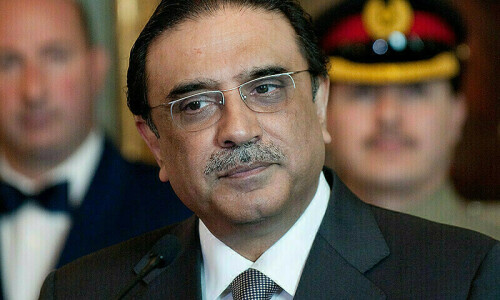Pakistan’s quest for economic stability continues, with some indicators showing significant improvement while others depict the plight of the common man. Inflation has come down to below 5pc, and the State Bank of Pakistan (SBP) has celebrated it with another two percentage points cut in interest rate of 13 per cent. The current account maintains its surplus, with exports of goods and services growing and remittances on the rise.
But, the number of unemployed people — between 4.5 million to 6.6m, according to the most conservative estimates — shows no signs of falling in the near future as large-scale manufacturing (LSM) output remains negative (during July-October 2024 LSM output declined 0.64pc year-on-year).
Small and medium enterprises that also cover small-scale industries are struggling to survive amidst the high cost of energy and finance and the deteriorating law and order situation across Pakistan.
The PML-N-led hybrid regime remains focused on how to deal with the main opposition party, PTI, in addition to fighting militancy and terrorism and fine-tuning its foreign policy amidst growing geopolitical challenges in the Middle East.
Economic recovery shows mixed progress, with inflation and interest rates declining, while unemployment remains high, and the hybrid regime struggles to shift to sustainable growth and reform amidst internal challenges and geopolitical complexities
The Middle Eastern region is in a deep political and military crisis, with Israel backed by the Western powers bent upon ensuring the emergence of a new Middle Eastern Order of its choice.
Factoring this scenario into the regular format of foreign policy isn’t an easy job, not much at a time when the US and China have divergent interests in Pakistan, and the country is struggling to balance its relationship with both. It is also not an easy job as the full-scale involvement of Iran in the Middle Eastern military conflict being accelerated by Israel could change the dynamics of Pakistan’s relationship with the Arab states in the Gulf Cooperation Council region from where the bulk of remittances come.
The ongoing militancy in Khyber Pakhtunkhwa and Balochistan is becoming harder and costlier by the day. Any foreign policy misstep, particularly after the inauguration of Donald Trump as President of the USA on January 20, 2025, may lead to a reversal of the nascent recovery of Pakistan’s economy, besides complicating the task of terror-fighting on Pakistani soil and containing terrorism originating from our Western borders.
As a state, Pakistan is currently under several serious challenges, each one of them potentially strong enough to shake the foundations of the nascent, fragile economic recovery besides further weakening the writ of the hybrid regime.
The Middle Eastern crises, diverging US & China interests, and ongoing militancy in Khyber Pakhtunkhwa and Balochistan are mounting stress onto Pakistan’s nascent economic recovery and weakening the writ of the government
Amidst this scenario, it is very difficult to work on a long-term economic plan to put the economy on a high 5pc plus annual growth, restore lost jobs and create additional ones, educating 25m out-of-school children or improving health and technology infrastructure. Small wonder, then, that the current hybrid regime remains in fire-fighting mode, and the status quo has become the order of the day.
Whatever new or revolutionary politico-economic policies or changes they are talking about are neither new nor revolutionary.
From tightening the noose around the tax evaders to planned digitising of the nation to boosting agriculture with the help of the armed forces to making Pakistan a hub of foreign direct investment, all fall into the category of efforts being made to maintain the status quo of the hybrid regime. (One example is the long-persisting restrictions on mainstream and social media and slow internet speed across Pakistan that check the quicker spread of “uncomforting narratives”).
However, that does not mean that if this hybrid regime braves all the challenges and survives the test of the time it would not deliver anything for Pakistan; it would. But that would be more than enough to win wider support for making the model hybrid regime a permanent feature in Pakistan.
It is up to the political class of the country and, of course, up to the active citizenry and how hard they work to put Pakistan’s economy on a sustainable and high-growth trajectory and, at the same time, also ensure civilian supremacy in the country.
For the time being, let’s celebrate lower inflation (which is more due to the demand contraction), falling interest rates and accumulation of a surplus in the Current Account — $944m in July-November 2024.
It’s a separate story, though, that the overall balance of payments during the same period was negative by $1.784 billion.
Published in Dawn, The Business and Finance Weekly, December 23rd, 2024













































